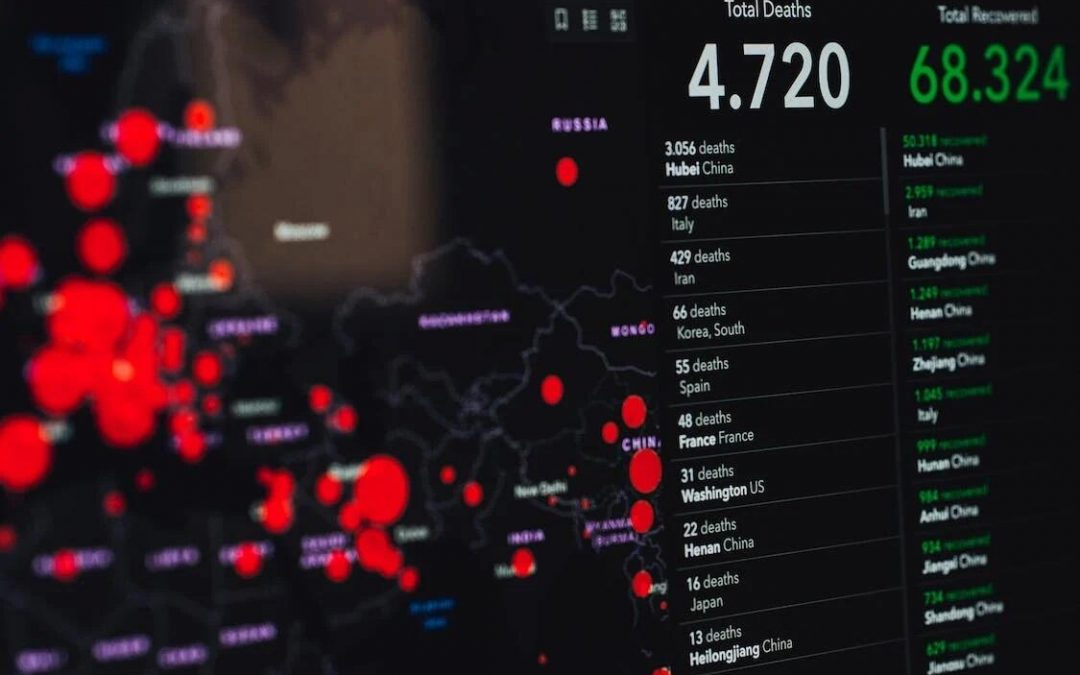Regular and frequent updates on the infection rates, as well as effective and striking visualisations, was the journalistic content most sought by news users during the COVID-19 pandemic. In their latest study, researchers John Magnus Dahl and Brita Ytre-Arne delve into the question of why close monitoring of such numbers appeared meaningful, and what these experiences can tell us about the role of journalism during global crises such as the pandemic.
Coverage of numbers, such as infection, hospitalization and mortality rates, received a high percentage of media space, and garnered much interest among news users. A significant number of media outlets around the world, including several Norwegian newspapers, decided to alter their front pages to highlight coronavirus metrics, and to help users to navigate the landscape of Coronavirus information.
The pandemic and news users’ preoccupation with monitoring various COVID-19 metrics has prompted researchers John Magnus Dahl and Brita Ytre-Arne to take a closer look and explore why close monitoring of such numbers appeared meaningful to news users, and what these experiences can tell us about the everyday engagement with data and the role of journalism during global crises such as the pandemic.
What do users want from journalism in time of crisis?
“Amidst the COVID-19 pandemic, people turned to news media for information and updates on the most recent developments. The news use through the pandemic is a topic that has attracted considerable scholarly interest. A variety of studies showed an increase in news consumption in early 2020, while also highlighting experiences of information overload, news fatigue, and the need for news users to prioritize in their engagements with the pandemic information flow”, says Postdoctoral Fellow John Magnus Dahl.
The MediaFutures’ researcher points out that the scientific discoveries in question have brought forward another questions: what users want from journalism in times of crisis, such as the COVID-19 pandemic, and how particular types of news are experienced as valuable under these special circumstances. In the latest publication, Dahl and Ytre-Arne provide answers to the aforementioned questions in the Norwegian context.
Expression of trust in the media
Drawing on qualitative in-depth interviews conducted in Norway in 2022, Dahl and Ytre-Arne argue in their study that monitoring infection rates should be viewed as a means to understand the pandemic, as a complex societal phenomenon with practical and existential implications.
Dahl elaborates: “To our informants, the mood of the early pandemic was characterised by precarity and uncertainty. Monitoring the infection rates was seen as a measure to understand what the pandemic was, and it quickly became an important part of the informants’ new, intensified media repertoire”.
According to the research, infection monitoring served as a tool for assessing risks, as well as to plan for arrangements and daily activities: “Our informants used the infection rate not only to evaluate potential threats to their own or others’ health, but also to plan for holidays, grocery shopping or using public transportation”, explains Dahl. The informants thus explained their monitoring of metrics as a means for gaining understanding, but also of having control of the situation to determine their own response. The researchers, however, suggests that the control offered by the infection rate went beyond practical purposes, and should be seen as a strategy to cope with the fear and anxiety caused by the pandemic.
As of the role of news outlets in infection monitoring, the study found that while journalistic outlets became an important source of information, what matter also was how the information was delivered to the news users. In demand were visualizations – while gathering information the study participants looked to news outlets that offered understandable and prominently placed infographics. Reporting numbers was seen as a valuable form of journalism also for people who normally would avoid legacy news media for different reasons. The researchers thus argue that monitoring of infection rates can be seen as an expression of trust in the media as a provider of factual information, also among those who are cynical towards other aspects of journalism.
The research paper “Monitoring the infection rate: Explaining the meaning of metrics in pandemic news experiences” was published in the journal Journalism and can be accessed here.
Image: Markus Spiske.

